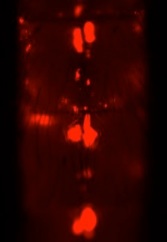Mosquito innate immunity

Mosquitoes live under constant threat of infection. As larvae and pupae, mosquitoes are immersed in an aqueous environment rife with bacteria. As adults, mosquitoes acquire pathogens through blood feeding, sugar feeding, injury-induced breaks in their cuticle, and pathogen-driven cuticular degradation. To resist infection, mosquitoes mount robust innate immune responses within minutes of pathogen exposure.
In broad terms, mosquitoes kill pathogens via three mechanisms: cell-mediated phagocytosis, melanization, and lysis. All can be initiated by pattern recognition receptors, and the factors leading to killing can be subdivided into cellular and humoral components. The cellular response includes phagocytosis and encapsulation by hemocytes and pericardial cells. The humoral response includes the phenoloxidase cascade system of melanization and wound healing, inducible antimicrobial peptides, reactive oxygen and nitrogen intermediates, and pattern recognition receptors. As with vertebrates, the line between cellular and humoral immunity is blurred because many humoral components are produced by hemocytes.

The Hillyer Lab is currently investigating hemocyte-mediated immune responses in the mosquito hemocoel. Over the years we have structurally characterized robust cellular immune responses in three different mosquito genera (Anopheles gambiae, Aedes aegypti and Armigeres subalbatus). We continue to investigate mosquito cellular immune responses by using genetically engineered fluorescent bacteria to study hemocyte migration, adhesion, and pathogen killing efficacy in an organismal context, collecting data in vivo and in real-time, and visualizing the interaction between diverse physiological systems.
Concurrently, we are exploring the genetic bases of immunity. We have identified genes and gene families with putative roles in cellular immunity and are investigating their developmental, temporal, and physical expression. In addition, we are assessing their functional role in immunity by knocking down gene expression or neutralizing their activity using RNA interference and antibody-mediated competitive binding assays.

Cellular immunity in the mosquito hemocoel
Similar to vertebrates, mosquitoes mount robust innate immune responses against invading pathogens. the Hillyer Lab is currently investigating the role hemocytes (immune cells) play in immunity and the genetic bases of pathogen killing.




Mosquito immunity in the three primary immune-competent compartments: the hemocoel (body cavity), the midgut, and the salivary glands.
